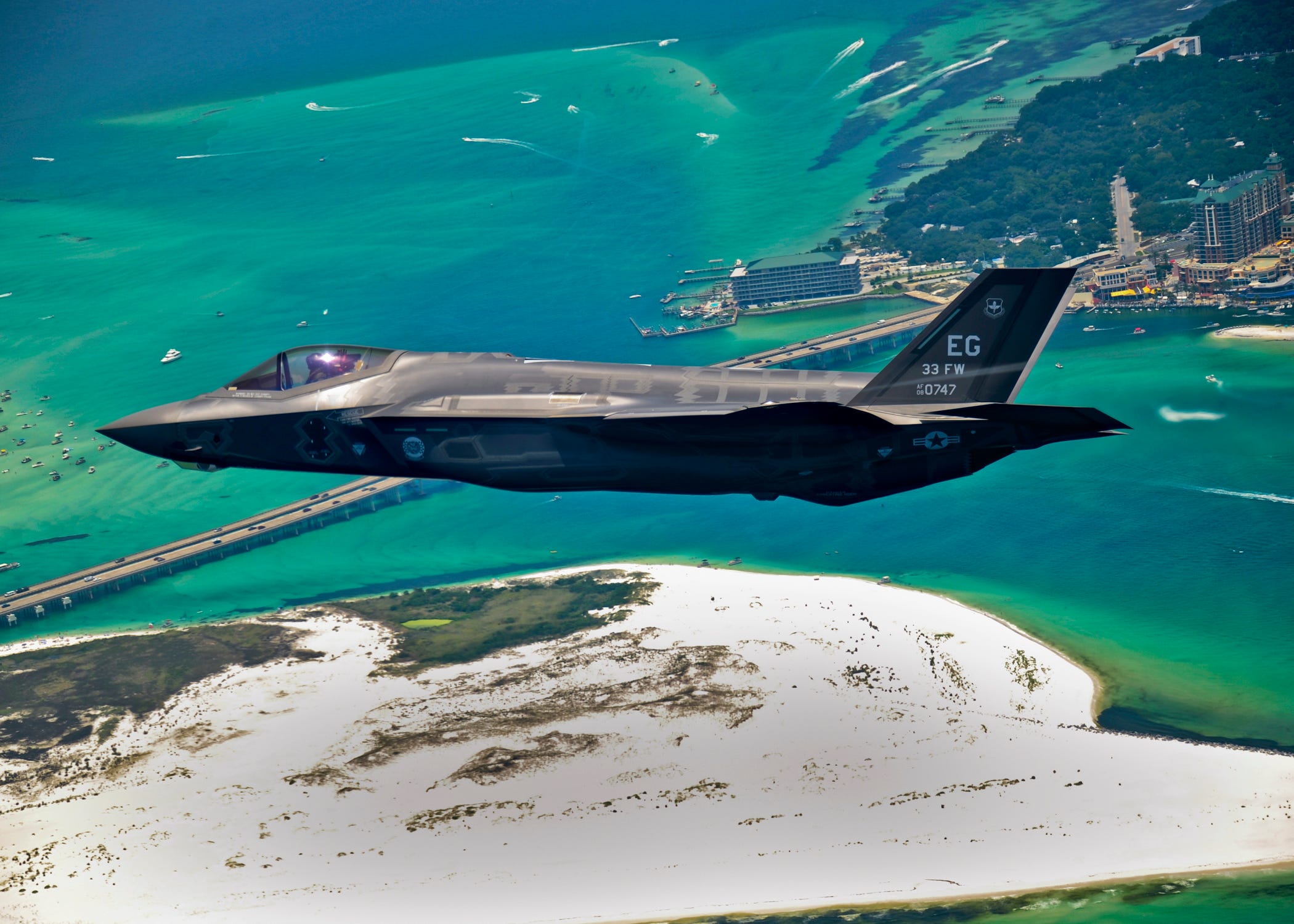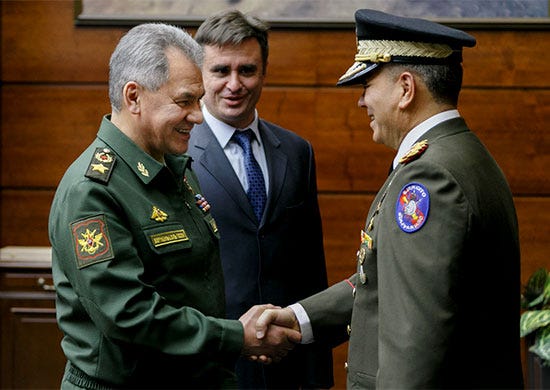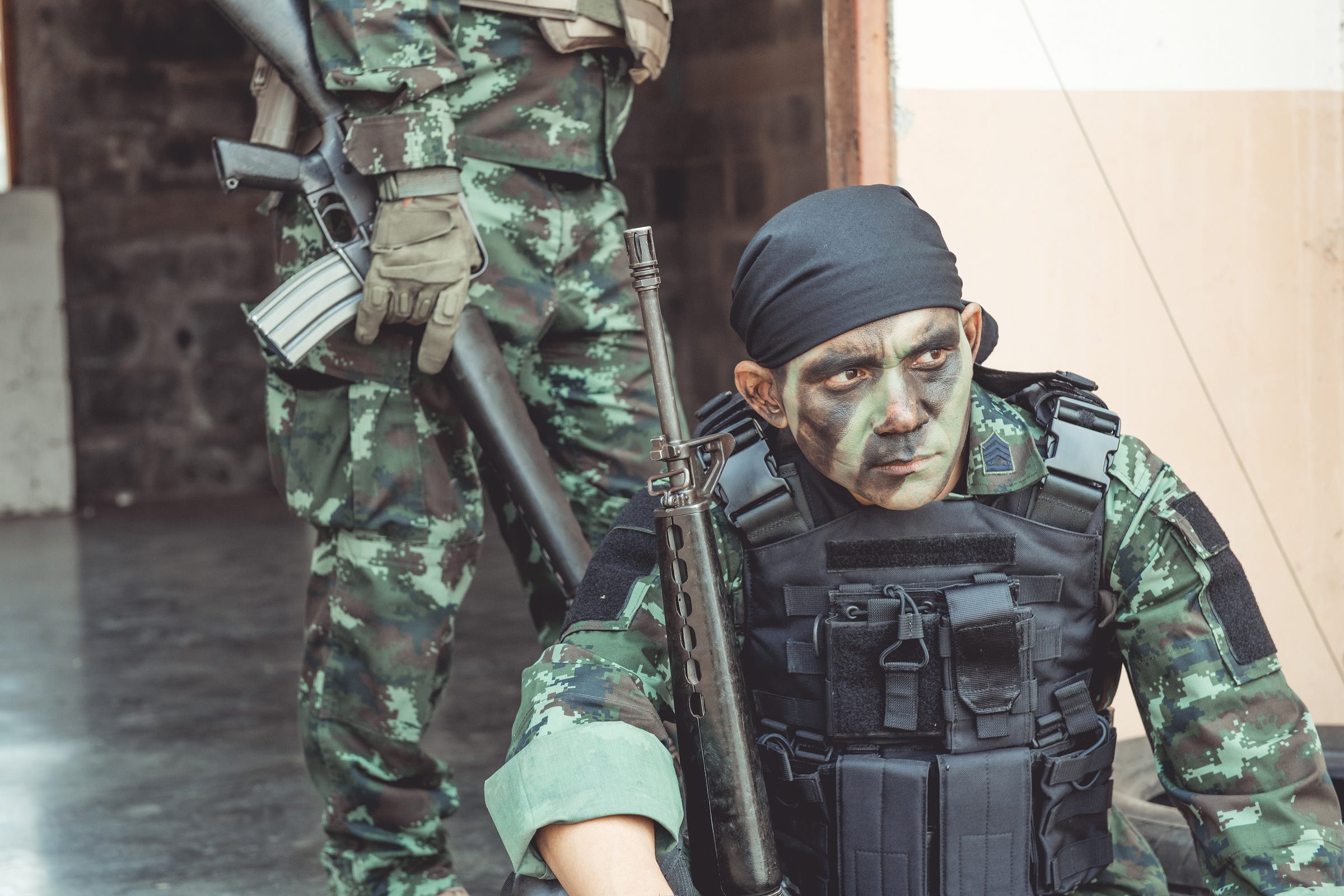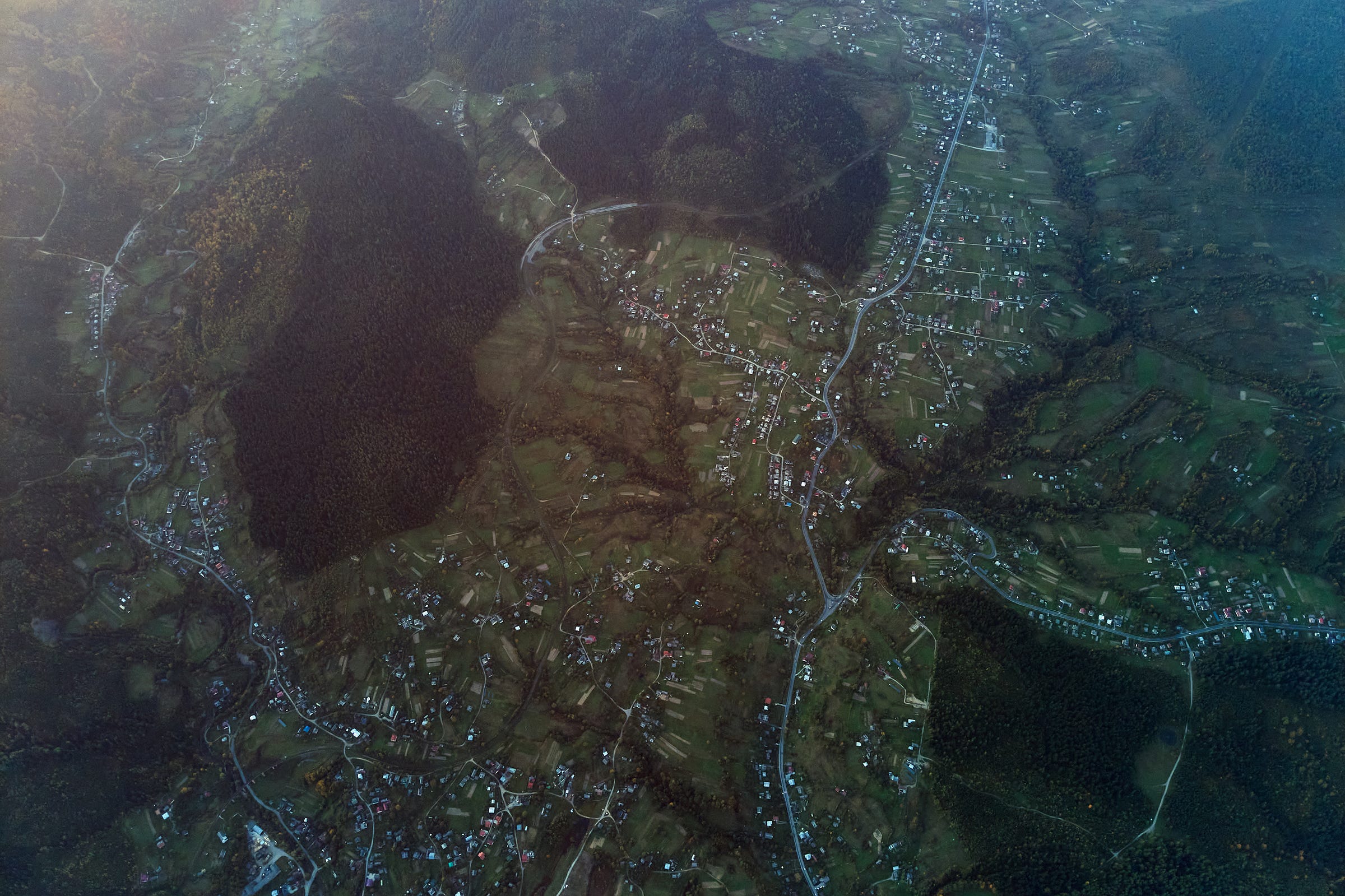What Would a US Invasion of Venezuela Actually Look Like?
US objective: Remove the regime, seize key nodes of power, and hold enough of the state to hand authority to a successor allied with US interests.
Lately the conversation has jumped from seaside interdictions to full-blown fantasies about boots on Venezuelan soil… a lot of hot takes, a lot of chest thumping, and not much sense.
The White House has publicly acknowledged covert CIA operations in Venezuela and even flirted with the idea of strikes on land; that sparked a wave of headlines, congressional alarm, and Caracas running drills.
Those are real escalations but calling them the start of a planned invasion confuses rhetoric with the awful arithmetic of actually taking and holding a country.
Calling for a ground invasion is dumb for the same reason it always is: the casualties, the politics, and the logistics.
Think in blunt terms: you can sink a few boats, you can jam a radio tower, you cannot magically conjure the tens of thousands of trained troops, transports, supply ships, and political will required to control Caracas, Maracaibo, and a coastline the size of a small continent.
Independent analysts and think tanks watching deployed US assets note there’s a lot of posture on the water and in the air, but short of a dramatic policy shift and regional consent, what’s present falls well short of an invasion force.
All that said: I’m not here to argue whether we should or shouldn’t. I’m here to do the thing the pundits can’t: map what a US invasion would actually look like at the system level.
If you’ve been reading my work for a while, you know how much I enjoy wargaming, and I’ll be naming platforms, munitions, and movement timelines; showing how the F-35s, B-2s, Growlers, MV-22s, subs, and sealift would choreograph together; and explaining why the first 72 hours might feel decisive while the next 72 months are the real problem.
If you ever watch the Grim Reapers channel on YouTube, they do hypothetical scenarios, albeit they use a video game to perform their simulated wargame.
My scenarios are always written.
As an aside, I used to write these briefs for my company commander, complete with weather reports and other details. He wanted his own “internal” S2 (intelligence) person rather than rely solely on Battalion intel. So, this might sound technical… but rest assured, this is fairly “high-level.”
If you want a moral debate, my stance is plain: invasion is stupid. If you want clear operational detail about how modern American military power would be applied, and what that application would cost in blood, read on my friends.
Strategic aims, constraints, and the battlespace
Objective: remove the regime, seize key nodes of power, and hold enough of the state to hand authority to a successor allied with US interests.
That means more than taking the presidential palace.
It means securing Caracas and the airspace, cutting communications and command and control, controlling oil infrastructure and ports, isolating any external backers, and preventing a protracted insurgency.
Venezuela is large: 912,000 square kilometers, with about 2,800 kilometers of coastline; major population centers hug the north coast and the west around Maracaibo.
That geography favors naval and air approaches, but it also forces an occupation across a lot of territory and through jungles, mountains, and sparse southern plains.
The Venezuelan armed forces are small by comparison to US peer forces: roughly 100–120,000 active personnel plus large paramilitary and militia elements that can act as rear-area security and guerrillas.
That force mix makes conventional knock-out easier than pacification. Expect the National Guard, militias, and pro-regime paramilitaries to be the primary friction for occupying forces.
Russia and private Russian elements have shown presence and interest in Venezuela in recent years.
Any significant Russian footprint (advisors, mercenaries, ships) complicates the opening calculus and raises the risk of escalation, especially at sea or in counterintelligence operations.
Venezuela’s oil and refinery complex is strategic.
Facilities at Paraguaná (Amuay, Cardón), El Palito, and the heavy infrastructure around Maracaibo are high-value objectives if the invading force wants to control revenue streams and deny the regime fuel for movement.
Recent years show these refineries operate intermittently, but they remain central to any political or economic stabilization effort.
Staging and forward basing would come from regional assets like US Southern Command cooperative sites in Aruba/Curacao and El Salvador provide immediate air and logistics options, plus carrier strike groups in the southern Caribbean and bases in Puerto Rico, Ecuador (if politically usable), and US territories.
Those hubs determine tempo.
Phase 0: Preparation and shaping (weeks to months before boots)
This is the invisible war.
Air and naval deployments move into the southern Caribbean. Cyber and EW teams map Venezuelan networks, satellites and ISR tasking focus on airfields, coastal defenses, and leadership sites. Diplomatic and financial choke points get targeted: sanctions, maritime interdiction, and control of the banking rails that fund the regime’s security apparatus.
Special operations and intelligence units insert reconnaissance teams to identify hardened sites, locate senior leaders’ safe houses, and test regime loyalty inside units.
Information operations prepare the narrative to split the military and encourage defections.
This shaping phase is slow work; the invasion’s success often depends on the shape it sets.
Phase 1: Initial blow, air-sea supremacy (first 48–72 hours)
Objective: destroy or blind Venezuelan air defenses and C2, seize air and sea approaches, and create secure corridors for airborne, amphibious, and sealift follow-ons.
Stealth strike and precision shaping: F-35 and stealth assets
What they do: open the skyline and remove high-value radar, SAM sites, command bunkers, and hardened communications nodes so the rest of the force can move.
Who: F-35 family up front: F-35A (USAF), F-35B (USMC short-field), and F-35C (carrier) depending on basing. The F-35s combine low observability with the AN/APG-81 AESA sensor and a sensor-fusion suite that gives pilots long look-and-engage reach. They push precision standoff fires and laser/GPS guided bombs while staying hard to detect.

Typical loadout and munitions: internal air-to-air AIM-120 AMRAAMs for self-defense; external or internal air-to-surface loads like GBU-31/32 JDAMs and smaller GBU-39/GBU-53 SDBs for point strikes; JASSM/JASSM-ER or LRASM where standoff range is required.
Tactical note: use F-35s to do the first discreet cuts: blow the radars, mask the runways, and hand target data to follow-on bombers and strike aircraft.
SEAD / DEAD: suppression and destruction of air defenses
What they do: actively hunt radars and SAM shooters, then kill them so strike packages and transports can pass.
Who: EA-18G Growler for stand-off jamming and radar suppression together with strike fighters (F-16, F-15, and F-35) firing anti-radiation missiles. The Growler escorts strike packages, conducts wideband jamming, and helps create windows for precision strikes.
Typical weapons: AGM-88 HARM family (anti-radiation) and other anti-radar munitions, plus decoys and jammer pods. Growlers will typically carry HARM while operating jamming pods and receivers. Recent missions show Growlers carrying multiple HARM rounds to rapidly pop emitting sites.
Tactical note: SEAD is dynamic. Expect a cat-and-mouse rhythm like suppress, strike, reposition, and repeat, until the adversary’s SAM net stops talking.
Long-range deep strikes: bombers and cruise missiles
What they do: remove hardened targets, deep C2, and military logistics nodes that stealth fighters can’t reach or that are too risky to attack from standoff within contested airspace.
Who: B-2 Spirit and long-range strike assets. The B-2 uses stealth and heavy payloads to hit hardened sites and bunkers. Submarines and surface combatants launch Tomahawk cruise missiles for distributed, low-risk strikes.
Typical munitions: JASSM and JASSM-ER for standoff strikes against hardened and mobile targets; JDAMs and bunker-busting options from bombers for fixed hardened targets; Tomahawks from ships/submarines for maritime-launched strikes.
Tactical note: use stealth bombers to kill the targets that would otherwise force ground units into costly fights or to knock out leadership sanctuaries.

Maritime strike and sea control
What they do: deny the coast to opposing naval movement, secure sea lines for amphibious ships, and interdict arms or sanction-busting traffic.
Who: Carrier strike group aviators (F/A-18E/F Super Hornet, F-35C where available), guided-missile destroyers and cruisers launching Tomahawk, and attack submarines conducting covert interdiction. LRASM and anti-ship versions of cruise missiles would be used against any surface threats. F-35 and Super Hornet air wings provide maritime strike and combat air patrol.
Typical munitions: LRASM for high-value shipkill options in contested littorals; Tomahawk for land strikes from sea; standard anti-air loadouts for CAP. Naval gunfire and missile strikes also shape littoral defenses before amphibious operations.
Tactical note: maritime suppression is two-layered: blue water interdiction by subs and cruisers, and littoral shaping by air and smaller surface assets.
ISR, battle management, and persistent eyes
What they do: find mobile SAMs, follow leadership movements, cue strike aircraft, and provide command and control for a fluid fight.
Who and how: E-3 AWACS provides overarching battle management and air picture. MQ-9 Reapers and RQ-4 Global Hawk provide persistent ISR to spot convoys, airfields, and militia concentrations. JSTARS or similar ground surveillance platforms track movement inland. Space and cyber assets feed national-level exploits and imagery. These platforms turn gobs of sensor data into strikes.
Tactical note: the fight is won where detection meets effect. ISR assets keep the strike packages fed; AWACS keeps the airspace deconflicted.
Air assault and special operations lift: getting people on the ground fast
What they do: place assault forces, seize airfields (Rangers Lead the Way!), and insert Special Operations teams to take leadership nodes and key infrastructure.
Who: MV-22 Osprey for medium-distance ship-to-shore and inland lift; CH-53 variants for heavy lift; MC-130 and special operations airframes for clandestine insertions; C-17/C-130 for larger airborne moves and airdrops of airborne brigades. Amphibious ships (LHA/LHD) and their Marine Expeditionary Units provide the sea-based launch capability.
Tactical note: Ospreys let you move a battalion fast from sea to objective, but they need permissive airspace created by the SEAD/stealth packages.
Electronic warfare and cyber strike package
What they do: blind, confuse, and fracture regime communications and social media; jam local radio and radar; inject false information; and degrade battlefield networks.
Who: EA-18G Growler leads airborne EW. Cyber teams target military C2, government broadcast systems, and financial or logistics networks. EW and cyber act across the stack; they are as kinetic as a bomb if they knock out the adversary’s ability to coordinate.
Tactical note: EW shapes the decision space. If you can stop the enemy from talking and seeing, their options shrink fast.
Phase 1 expected casualties: this is where the spike happens. Rapid, high-precision fires reduce friendly exposure, but urban and coastal SAM pockets and misfires produce nontrivial losses.
US forces (assault echelons and aviation): KIA estimate 50–400; WIA 200–1,200.
Lower bound (50 KIA): highly successful SEAD/DEAD, good ISR, minimal foreign interference, and substantial Venezuelan collapse/defections.
Upper bound (400 KIA): contested SEAD fight, embedded SAMs, effective Venezuelan AD employment, and localized anti-ship or anti-air success.
Venezuelan military, National Guard, militias (combatants): KIA 1,000–8,000; WIA 3,000–15,000; captured or surrendered many thousands more.
Civilian casualties (deaths/wounded from strikes, urban fighting, panic): Dead 500–6,000; wounded 2,000–20,000; displaced tens of thousands.
Why the wide range? Air campaigns reduce friendly boots-on-ground exposure but cannot eliminate risk from mobile SAMs, man-portable air defenses, and densely populated urban targets that invite collateral harm.
If regime forces fight conventionally and mass armor columns, their casualties rise; if they melt into the populace and militia fight from neighborhoods, civilian harm rises and friendly KIA falls.
Just a note on civilian casualties. As we go through this exercise, you’ll quickly see the civilian death toll outpace all other casualties. Most American theater commanders, drawing on lessons from WWI to today, would make an earnest attempt to avoid civilian deaths as much as possible. In my opinion, this is what distinguishes Western forces from a force like Russia… which has no problem firing cruise missiles at civilian apartment buildings in Ukraine.
Having said that, targeting mistakes still happen, some units (very rare) participate in massacres, and if guerilla forces attempt to hide among the civilian population, some non-combatants will lose their lives.
Phase 2: Seizure of key nodes (days 3–10)
Goal: capture Caracas, ports, and major oil facilities quickly, and decapitate leadership.
Airborne and heliborne insertions seize international airports and airbases near Caracas (La Carlota if still operable, and Simón Bolívar/ Maiquetía), securing air bridges for logistical follow-on.
Special forces (SOF) take presidential compounds, state media hubs, and key communication nodes. Those units move fast; they either capture leadership or force them into hiding.
Amphibious landings hit at Puerto Cabello and La Guaira to secure maritime gateways. If Maracaibo resists, expect either a separate amphibious or littoral operation from the Gulf of Venezuela to seal the west.
Rapid ground advances by Marine Expeditionary Units (MEU) and Airborne brigades roll along the coast toward population centers. Mechanized Army units follow to consolidate and hold lines. Logistics ships and sealift move in under naval protection.
This phase is where the US advantages in mobility, ISR, and precision fires pay off, but it still risks high urban friction. Venezuelan forces are likely to melt into cities and neighborhoods or conduct delaying attacks along main approaches. Geography makes quick seizure possible, but it does not make stabilization easy.
Phase 2 expected casualties: heavy localized urban friction, special operations raids, and naval/air interdiction churn.
US forces (airborne, heliborne inserts, SOF, MEU shore parties): KIA 100–600 cumulative (adds to Phase 1); WIA 400–2,400.
Venezuelan combatants: KIA 2,000–12,000; WIA 5,000–25,000; many units fragment or surrender.
Civilian casualties: Dead 1,000–12,000; wounded 5,000–40,000; new displacement in the low hundreds of thousands as people flee urban fighting and oil-facility threats.
Why: clearing airports, presidential compounds, refineries, and port facilities is dangerous. Even with precision strikes, close-quarters fights and snipers increase US and Venezuelan casualties.
Sabotaged refineries and secondary explosions amplify civilian harm and casualties among infrastructure workers.
Phase 3: Stabilization, control, and the ugly middle (weeks 2–months)
Capturing palaces and refineries is the doable part.
Holding them is the expensive part.
Urban fighting. Caracas is a dense, sprawling city with informal neighborhoods and high-rise enclaves. Clearing for intelligence and hostage rescue is slow. Expect booby traps, sniper fire, and militia harassment.
The National Guard and militias will blend with civilians, making precision rules of engagement politically and operationally poisonous.
Oil and infrastructure. Refineries can be captured, but they are vulnerable to sabotage. Seizing Amuay, Cardón, and El Palito secures fuel and a bargaining chip, but the facilities may be damaged or offline; operators and technicians will be scarce after years of dysfunction. Fuel distribution networks are fragile, so even captured refineries don’t instantly solve logistics.
Insurgency and rural sanctuaries. The south and borderlands offer cover. Remnants will run to jungle, seek refuge in remote provinces, or attempt cross-border exfiltration. Holding population centers and the main lines of communication requires a large footprint of infantry, engineers, and police advisors.
Force numbers and rotations. Tactical success needs a sustained occupation force much larger than the initial assault echelon.
A rule of thumb from modern operations: expect to leave in theater at least three to five times the number of troops needed to seize objectives, for population security and civil affairs governance support.
Numbers depend on American political will and funding; without a clear, long-term plan, stabilization collapses into violence.
Phase 3 expected casualties: lower daily kinetic rates than the opening salvo, but sustained attrition across combatants, security forces, and civilians. Insurgency begins to bite.
US and coalition forces (security, patrols, convoys): KIA per month 50–250; WIA per month 200–1,000. Over several months this adds up to 300–1,500 KIA and 1,000–6,000 WIA depending on footprint and force protection.
Venezuelan combatants, paramilitaries, and criminal groups: additional KIA 5,000–30,000 cumulative over months; WIA 10,000–50,000. Many casualties come from small-unit actions, raids, and interdiction.
Civilian casualties: ongoing fatalities 1,000–20,000 over months; wounded 5,000–60,000; displaced population grows into hundreds of thousands to millions depending on humanitarian corridor effectiveness.
Why: stabilization demands boots on the ground for population control, policing, and reconstruction. Those missions expose troops to IEDs, ambushes, and targeted assassinations. Urban militias and crime exploit governance gaps to sow continued violence.
Phase 4: The gray war that follows (months to years)
Occupation invites corruption, criminal economics, and a low-intensity insurgency. Paramilitary groups, organized crime, and foreign actors can turn spare parts into bullets and fuel into financing. The US would need to build partner police forces, rebuild institutions, and run a persistent intelligence and battlefield surveillance campaign.
Control of oil revenues is central. If occupiers can get refineries and export lanes functioning, they can reduce the cost of the occupation; if not, the operation becomes a fiscal sink. Repairing and safely operating Venezuelan refineries requires technicians, spare parts, and security; that is a long slog.
Phase 4 expected casualties: lowish direct conventional combat deaths annually for US troops if occupation and policing are robust, but cumulative costs and attrition rise through insurgency, criminal violence, and disease.
Civilian toll and displacement dominate the human cost.
US/coalition forces: annual KIA 50–300 and WIA 200–1,200 in a protracted stabilization mission; cumulative KIA over 1–3 years 150–1,500 depending on rotation tempo and rules of engagement.
Venezuelan combatants, militias, and criminal groups: cumulative KIA across years 10,000–50,000; WIA 20,000–100,000.
Civilian casualties and humanitarian impact: deaths across years 5,000–50,000; wounded tens of thousands; displaced population possibly 1–3 million internally and externally depending on length of conflict and international refugee response.
Economic collapse, healthcare breakdown, and secondary mortality amplify these numbers beyond direct combat deaths.
Key modifiers that change my casualty math
Foreign intervention: direct Russian or significant Chinese kinetic backing multiplies combatant casualties on both sides and would likely spike US losses dramatically.
Urban intensity and Rules of Engagement: permissive ROE and heavy fires reduce friendly exposure but spike civilian casualties; restrictive ROE protects civilians but raises friendly KIA/WIA.
Humanitarian access and medical evacuation: rapid medevac and field hospitals reduce fatality rates among wounded, lowering KIA/WIA ratios for US and partner forces.
Sabotage of oil and industrial sites: secondary explosions increase civilian and worker casualties beyond combatant figures.
Insurgent sanctuaries across borders: cross-border supply lines sustain insurgency and extend the timeline and casualty counts.
Wild cards and complicators
Russia, China, and regional actors: their responses matter. Russian advisors, private military contractors, or visiting ships can create localized crises, especially if they directly challenge US forces. Even a small number of external actors complicates escalation calculations.

Proxy logistics and gray zones: arms and supplies moving through porous maritime routes and across borders can feed insurgents. South American geography and political diversity make interdiction imperfect. Expect a long campaign of maritime interdiction and partner nation pressure.
Information environment: controlling the narrative is as important as controlling the ports. Regime media, social networks, and foreign broadcasts will try to mobilize resistance and delegitimize occupiers. Psychological operations and honest governance messages must be persistent and credible.
An invasion staged with the best US platforms, pilots, and planners will still look like a surgical demonstration followed by a long, messy hospital stay.
The first 72 hours can feel decisive. Precision fires, stealth aircraft, and amphibious mobility can collapse a command structure and seize ports and runways.
After that the math changes. Holding cities, protecting oil workers, securing neighborhoods, and rebuilding everything that combat breaks are not problems you can bomb away.
The worst harm lands on people who did not choose a fight.
Civilians will bear the brunt from stray strikes, collapsing infrastructure, looted hospitals, and disrupted supply lines.
Refugee flows will surge. Disease and hunger will follow the guns. Even at the low end of my casualty ranges, the civilian toll dwarfs combatant losses.
At the high end it becomes an international catastrophe that outlives headlines and administrations.
External actors will posture, sell advice, and try to score political points. That will complicate logistics and raise the risk of ugly incidents.
But those calculations are secondary to what you cannot buy back: hospitals emptied, schools closed, families split.
War always writes its ledger in human lives first and in neat operational diagrams second.
Anyhoo, I hope this was interesting for my readers. I would bet money that something similar to this has been, or soon will be, presented to SECDEF Hegseth to present to the President… But likely with lower casualty figures. Military leaders at the political level are always overly-optimistic.
Stay safe, stay frosty, and Слава Україні!





So. Shock and awe, followed by a long pacification ending at best in a puppet regime able to stay in power only until we declare victory and withdraw.
Lyrics Send the Marines:
What with President Johnson practicing escalatio on the Vietnamese
And then the Dominican Crisis on top of that
It has been a nervous year
And people have begun to feel like a Christian Scientist with appendicitis
Fortunately, in times of crisis like this
America always has its number one instrument of diplomacy to fall back on
Here's a song about it
When someone makes a move
Of which we don't approve
Who is it that always intervenes?
U.N. and O.A.S
They have their place, I guess
But first - send the Marines
We'll send them all we've got
John Wayne and Randolph Scott
Remember those exciting fighting scenes?
To the shores of Tripoli
But not to Mississippoli
What do we do? We send the Marines!
For might makes right
And till they've seen the light
They've got to be protected
All their rights respected
Till somebody we like can be elected
Members of the corps
All hate the thought of war
They'd rather kill them off by peaceful means
Stop calling it aggression
Ooh, we hate that expression!
We only want the world to know
That we support the status quo
They love us everywhere we go
So when in doubt
Send the Marines!